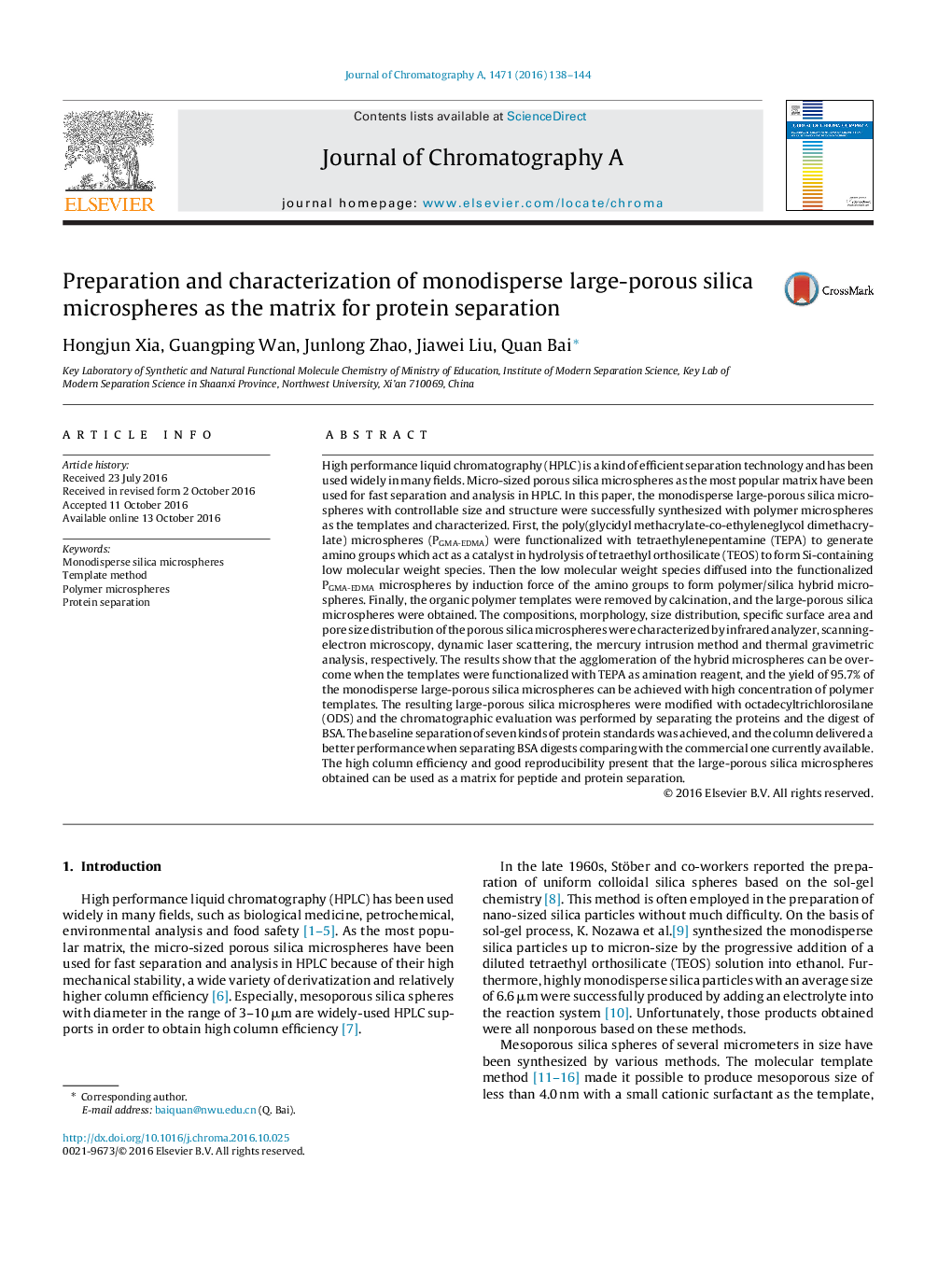| کد مقاله | کد نشریه | سال انتشار | مقاله انگلیسی | نسخه تمام متن |
|---|---|---|---|---|
| 5135831 | 1493455 | 2016 | 7 صفحه PDF | دانلود رایگان |
- The monodisperse silica was obtained with controllable morphology and structure.
- The agglomeration could be overcome with TEPA as amination reagent.
- The yield of 95.7% was achieved with high concentration of templates.
- The synthesized silica can be used as an excellent matrix for protein separation.
High performance liquid chromatography (HPLC) is a kind of efficient separation technology and has been used widely in many fields. Micro-sized porous silica microspheres as the most popular matrix have been used for fast separation and analysis in HPLC. In this paper, the monodisperse large-porous silica microspheres with controllable size and structure were successfully synthesized with polymer microspheres as the templates and characterized. First, the poly(glycidyl methacrylate-co-ethyleneglycol dimethacrylate) microspheres (PGMA-EDMA) were functionalized with tetraethylenepentamine (TEPA) to generate amino groups which act as a catalyst in hydrolysis of tetraethyl orthosilicate (TEOS) to form Si-containing low molecular weight species. Then the low molecular weight species diffused into the functionalized PGMA-EDMA microspheres by induction force of the amino groups to form polymer/silica hybrid microspheres. Finally, the organic polymer templates were removed by calcination, and the large-porous silica microspheres were obtained. The compositions, morphology, size distribution, specific surface area and pore size distribution of the porous silica microspheres were characterized by infrared analyzer, scanning-electron microscopy, dynamic laser scattering, the mercury intrusion method and thermal gravimetric analysis, respectively. The results show that the agglomeration of the hybrid microspheres can be overcome when the templates were functionalized with TEPA as amination reagent, and the yield of 95.7% of the monodisperse large-porous silica microspheres can be achieved with high concentration of polymer templates. The resulting large-porous silica microspheres were modified with octadecyltrichlorosilane (ODS) and the chromatographic evaluation was performed by separating the proteins and the digest of BSA. The baseline separation of seven kinds of protein standards was achieved, and the column delivered a better performance when separating BSA digests comparing with the commercial one currently available. The high column efficiency and good reproducibility present that the large-porous silica microspheres obtained can be used as a matrix for peptide and protein separation.
Journal: Journal of Chromatography A - Volume 1471, 4 November 2016, Pages 138-144
